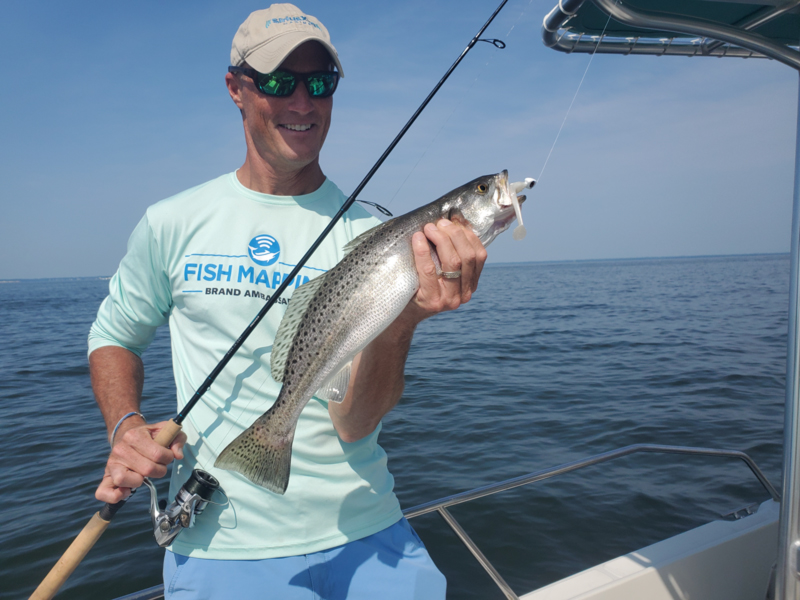Speckled trout have an unusual relationship with riprap, which is different form how species like striped bass or white perch associate with it. Yet riprap can still congregate the fish and lead to rather excellent catches. So… what’s so different, and how should you make tactical adjustments?

- When speckled trout orient to riprap they often sit five, 10, or more yards away from the rocks, as opposed to right up next to them. If you’re used to casting for rockfish along the rocks, you’ll be tempted to crank your lure in fast once it’s halfway back to the boat so you can get in your next cast. Don’t do it. Quite often the specks will be farther out than expected and if you crank up too quick you might miss bites.
- Unlike many predators, specks will often sit deep, at or near bottom, when orienting to riprap (assuming the riprap doesn’t drop off into extremely deep water, and that you’re not fishing at dusk or dawn when they often feed right up top). Give your offering some time to sink, and work the entire water column including just off the bottom.
- Look for areas where current and/or wind hits the rocks. Quite often specks will favor areas hit by moving water. The doesn’t mean you shouldn’t take a few casts at rocks on the other side of the point or in a sheltered area, but when choosing where to concentrate your efforts keep this in mind.
Check out this video on how to fish for speckled trout, which was filmed while casting near a rock jetty off of Smith Island. You'll be able to see first-hand the lures and retrieve techniques that work like magic when those specks are near rocks.